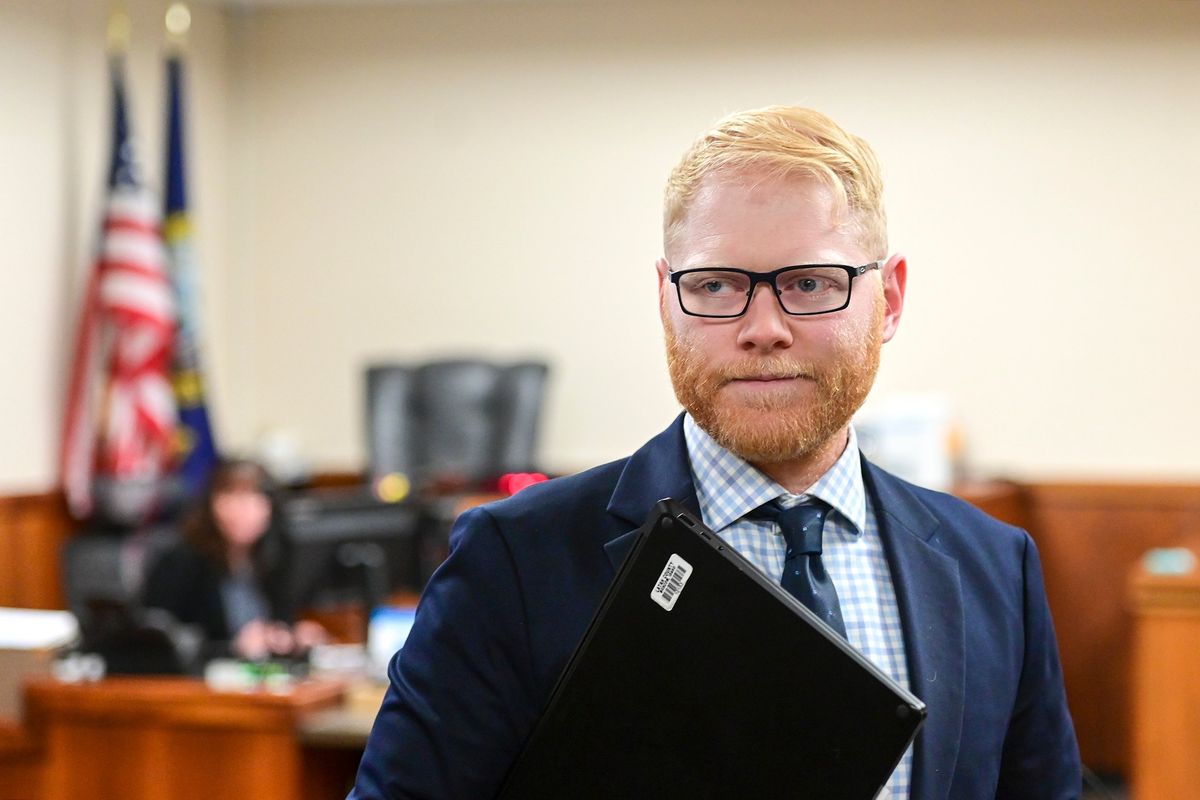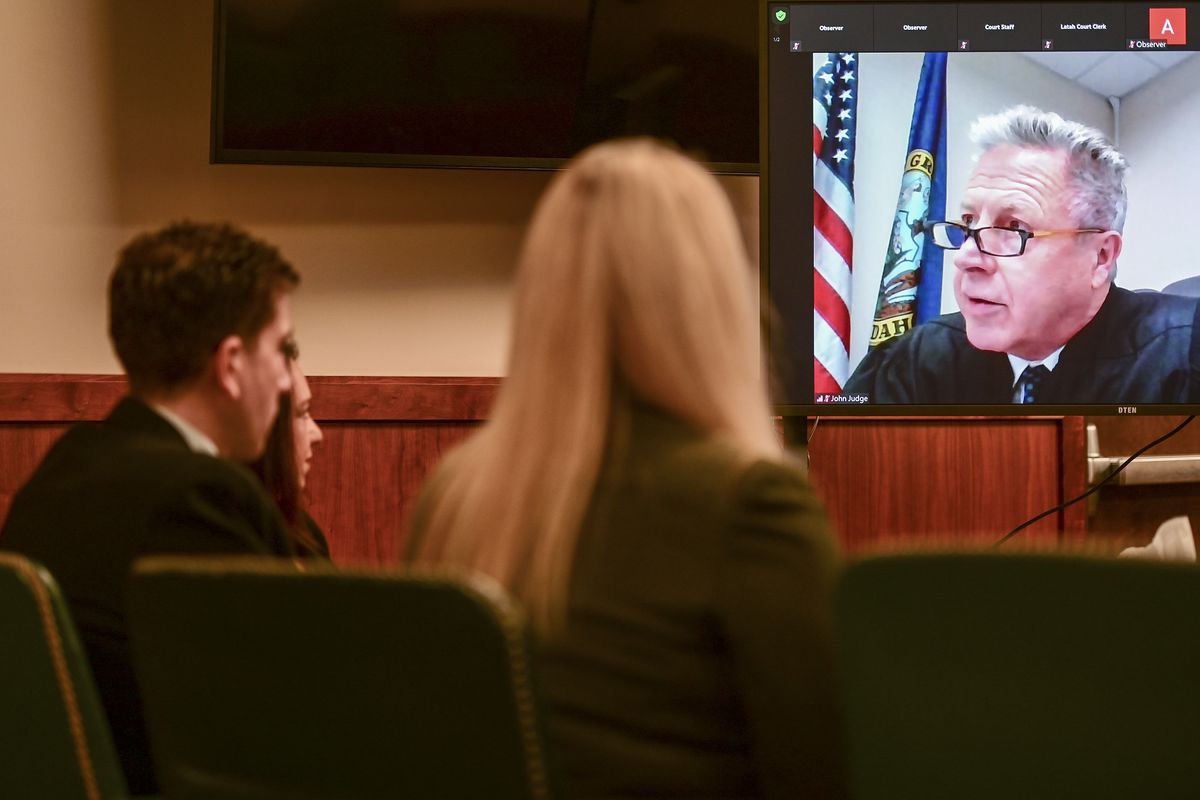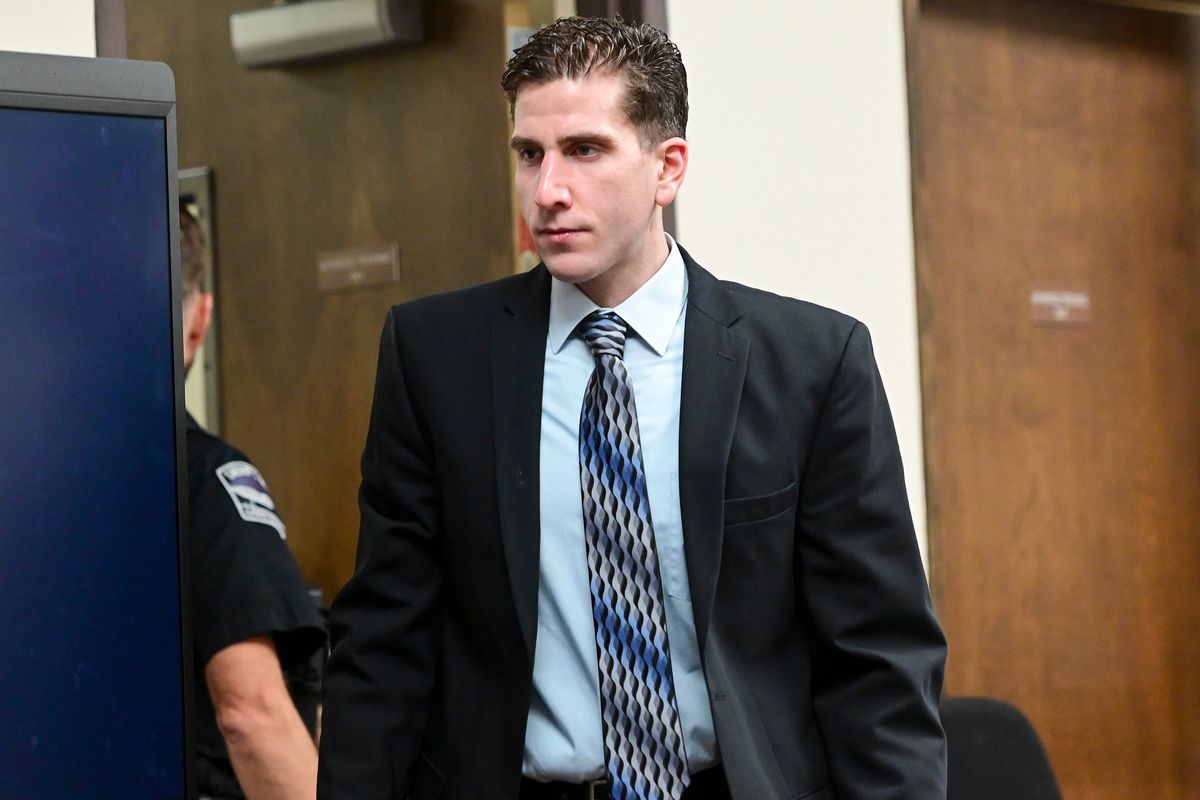Will the trial in the Idaho killings be on TV? A judge on Friday heard arguments over the gag order in Bryan Kohberger’s case
Latah County Judge John C. Judge presides over a motion hearing regarding a gag order in a case against Bryan Kohberger in Latah County District Court, Friday, June 9, 2023, in Moscow, Idaho. Kohberger is accused of killing four University of Idaho students in November 2022. (Zach Wilkinson/Moscow-Pullman Daily News via AP Pool)
No one is happy with the media coverage in the case of Bryan Kohberger, the man accused of killing four University of Idaho students last fall.
A coalition of media outlets is frustrated that a nondissemination order, or gag order, has cut off most avenues for reporting.
Defense attorneys worry the “enormous amount” of coverage on the case has created a mob intent on pushing Kohberger to the firing squad without a fair trial. Prosecutors are concerned additional coverage will make conducting a fair trial difficult.
And the judge overseeing the case is upset with the TikTok, YouTube and television coverage of the case. He said he wished for more explanatory and balanced coverage like he has seen in local media outlets.
“That would be nice, to see more of that, than the sensationalizing that we are seeing in the national media,” said Latah County District Court Judge John Judge.
All of the colliding interests were aired Friday and will come to some sort of ending when Judge rules on the gag order and whether to allow cameras in future court hearings.
The 28-year-old Kohberger is accused in the slayings of Maddie Mogen, Kaylee Goncalves, Ethan Chapin and Xana Kernodle at the women’s off-campus home. The killings and seemingly stalled investigation ignited a media frenzy. After investigators arrested Kohberger, Latah County Magistrate Court Judge Megan Marshall prohibited attorneys in the case, including those representing victims’ families and witnesses, from speaking to the press.
A coalition of media outlets, including The Spokesman-Review, opposed the order, arguing it limited their ability to report on and inform the public about the proceedings.
At Judge’s request, the parties also made arguments on whether cameras should continue to be allowed in the courtroom.
Kohberger wants cameras limited in the courtroom to protect his right to a fair trial, prevent “unfairly prejudicial coverage” and harassment of those involved in court proceedings.
In court documents, Kohberger acknowledged the international coverage of the cases but said some coverage has included unfounded opinions, particularly when it comes to body language analysis.
He cited coverage from Nancy Grace and a Law and Crime Podcast that included the phrase “cold iciness” in the title, among other posts.
Kohberger, his prosecutors and the media coalition cited the recent barring of cameras in the high-profile trial of Lori Vallow Daybell in support of their arguments. Vallow Daybell was recently convicted of killing her two children and is awaiting trial on other charges.
In the Vallow Daybell case, a judge held that video footage created an overwhelming focus on Vallow Daybell by zooming in on her face throughout the vast majority of the hearing, an issue Kohberger cited as a potential problem in his case.
The media coalition argued that the lack of cameras in the courtroom during the Vallow Daybell case not only didn’t reduce public interest, but created doubt in the proceedings because the public couldn’t watch for themselves and instead obtained information secondhand.
Prosecutors noted there is a similar level of interest in the Vallow Daybell case and Kohberger’s.
They outlined concerns about the number of sensitive witnesses who would “likely be intimidated, harassed, or harmed” by a live broadcast of the trial, along with concerns about jurors and witnesses watching testimony during off hours.
If cameras are allowed, they said, the presiding judge should control the positioning, location and zooming lenses of cameras.
Judge said he’s never excluded cameras from the courtroom before and is “open minded” about the issue, before noting his frustration with how the case has been portrayed.
“It’s what the media does with the videos, with the photographs and how it’s sort of manipulated in a way that’s harmful, in my opinion,” Judge said.
Despite voicing opinions in court, Judge said he would make a written ruling on the issues after reviewing the written briefs and considering Friday’s arguments.










